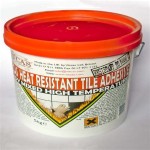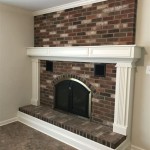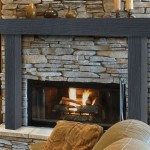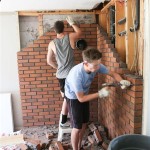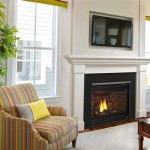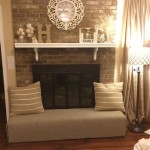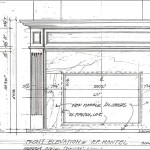```html
Understanding Ventless Indoor Gas Fireplaces
Ventless indoor gas fireplaces offer a compelling alternative to traditional wood-burning fireplaces or vented gas models. They operate without the need for a chimney or external venting system, presenting advantages in terms of installation flexibility and energy efficiency. These units burn natural gas or propane and release the combustion byproducts directly into the room. The technology relies heavily on oxygen depletion sensors (ODS) and catalytic converters to ensure safe operation. Understanding the intricacies of ventless fireplaces, including their safety measures, operational requirements, and potential drawbacks, is crucial before considering their installation.
The core principle behind a ventless fireplace is complete combustion. Ideally, the gas fuel is entirely converted into carbon dioxide (CO2) and water vapor (H2O). However, perfect combustion is rarely achieved, leading to the production of other byproducts, including carbon monoxide (CO), nitrogen dioxide (NO2), and unburned hydrocarbons. The ODS and catalytic converter are designed to mitigate the risks associated with these byproducts. The ODS continuously monitors the oxygen levels in the room. If the oxygen level drops below a predetermined threshold, indicating a potential buildup of CO, the ODS automatically shuts off the gas supply to the fireplace. The catalytic converter further reduces emissions by oxidizing remaining CO and hydrocarbons into CO2 and H2O.
While the technology has significantly improved over the years, concerns regarding indoor air quality remain a central consideration. The quantity of byproducts released into the room depends on factors such as the fireplace's BTU rating, the size and ventilation of the room, and the efficiency of the catalytic converter. Regular maintenance, including cleaning the burner and inspecting the ODS, is vital to ensure optimal performance and minimize emissions. Selecting a ventless fireplace certified by a reputable organization, such as the American National Standards Institute (ANSI), provides assurance that the unit has met stringent safety and performance standards.
Key Point 1: Safety Mechanisms and Operation
The operation of a ventless gas fireplace hinges on several critical safety mechanisms. The primary safety feature is the Oxygen Depletion Sensor (ODS). This sensor constantly monitors the oxygen concentration in the room where the fireplace is installed. As the fireplace burns, it consumes oxygen. If the oxygen level drops below a safe threshold, typically around 18%, the ODS valve automatically shuts off the gas supply. This prevents the buildup of dangerous levels of carbon monoxide, a colorless, odorless gas produced by incomplete combustion.
The catalytic converter is another essential component. This device is designed to reduce the levels of carbon monoxide and unburned hydrocarbons released into the room. It contains a catalyst, often platinum or palladium, which speeds up the oxidation process, converting these pollutants into carbon dioxide and water vapor. The effectiveness of the catalytic converter diminishes over time, requiring periodic replacement to maintain optimal performance. The lifespan of a catalytic converter is typically measured in years and depends on the frequency of fireplace use.
Proper installation is paramount to safe operation. Ventless fireplaces are designed to be installed in specific sized rooms, as mandated by the manufacturer. The room size dictates the maximum BTU rating of the fireplace that can be safely used. Over-sizing a fireplace for a particular room can lead to excessive oxygen depletion and the potential buildup of carbon monoxide. Additionally, local building codes often specify ventilation requirements, such as the presence of operable windows or vents, to ensure adequate air exchange.
Users should ensure that the fireplace and its components are regularly inspected and maintained. This includes cleaning the burner, checking the pilot light, and inspecting the ODS and catalytic converter for any signs of damage or deterioration. A qualified technician should perform these maintenance tasks annually to guarantee the fireplace is operating safely and efficiently.
Key Point 2: Ventilation and Room Size Requirements
While ventless fireplaces eliminate the need for external venting, they are not entirely independent of ventilation considerations. The size of the room where the fireplace is installed plays a crucial role in ensuring safe operation. Smaller rooms require fireplaces with lower BTU ratings to prevent excessive oxygen depletion. Manufacturers provide specific room size recommendations for each model, and these recommendations should be strictly adhered to. These recommendations are based on thorough testing and calculations to ensure adequate air exchange and prevent the buildup of harmful gases.
The concept of air exchange is essential in understanding the ventilation requirements. Air exchange refers to the rate at which fresh air enters the room and stale air exits. Even though ventless fireplaces do not require a chimney, providing a means for fresh air to enter the room is critical. This can be achieved through operable windows, doors, or vents. Some building codes may mandate the installation of dedicated vents in rooms with ventless fireplaces to guarantee sufficient air exchange.
The presence of other gas-burning appliances in the same room can further impact the ventilation requirements. Appliances such as gas stoves, water heaters, and clothes dryers also consume oxygen during combustion. If multiple gas appliances are operating simultaneously in a poorly ventilated room, the risk of oxygen depletion increases significantly. In such cases, it may be necessary to increase the ventilation rate to ensure a safe environment.
Homeowners should be aware of signs indicating inadequate ventilation. These signs include headaches, dizziness, nausea, and a general feeling of stuffiness. If any of these symptoms are experienced while the fireplace is in operation, it should be immediately turned off, and the room should be ventilated. Furthermore, installing a carbon monoxide detector is strongly recommended to provide an early warning of any potential CO buildup.
Key Point 3: Advantages and Disadvantages of Ventless Fireplaces
Ventless gas fireplaces offer several advantages that make them an attractive option for some homeowners. One of the most significant advantages is their ease of installation. Because they do not require a chimney or venting system, they can be installed in locations where traditional fireplaces are not feasible. This makes them particularly appealing for apartments, condominiums, and homes without existing fireplaces. The installation process is generally less expensive and less disruptive than installing a vented fireplace.
Another advantage is their energy efficiency. Since the heat generated by the fireplace is released directly into the room, there is no heat loss through a chimney. This can result in significant energy savings compared to vented fireplaces, which lose a substantial portion of their heat up the chimney. Ventless fireplaces typically have higher efficiency ratings, meaning more of the fuel's energy is converted into usable heat.
However, ventless fireplaces also have several disadvantages that must be carefully considered. The primary concern is indoor air quality. While the ODS and catalytic converter are designed to minimize emissions, they do not eliminate them entirely. The release of even small amounts of carbon monoxide, nitrogen dioxide, and water vapor can potentially impact indoor air quality, especially in poorly ventilated rooms. Individuals with respiratory problems, such as asthma or allergies, may be particularly sensitive to these emissions.
Another disadvantage is the potential for moisture buildup. The combustion process produces water vapor, which is released into the room. This can increase the humidity levels, potentially leading to condensation, mold growth, and damage to building materials. Proper ventilation is essential to mitigate this risk. Moreover, ventless fireplaces are typically restricted to supplemental heating and are not intended to be used as the primary heat source for a home.
The aesthetic limitations also warrant consideration. Ventless fireplaces often have a less realistic flame appearance compared to vented models. The burner design and the materials used in the firebox can affect the visual appeal of the flame. Selecting a high-quality ventless fireplace with a realistic flame pattern can help to minimize this disadvantage.
```:max_bytes(150000):strip_icc()/ventless-gas-fireplaces-4160746-hero-f9d4bdcd9bd446eb84406de306f790ba.jpg?strip=all)
How To Pick Out A Ventless Gas Fireplace

Duluth Forge Dual Fuel Ventless Gas Fireplace 26 000 Btu T Stat Control Antique White Finish Com

What Is A Ventless Gas Fireplace Experts In Gaithersbutg Md

Ventless Gas Fireplace Propane

The Best Indoor Ventless Fireplaces For Your Home Or Apartment

Ventless Gas Fireplace Vent Free Modern

Duluth Forge Dual Fuel Ventless Gas Fireplace 26 000 Btu Remote Control Antique White Finish 170105 The Home Depot

Modern Ventless Gas Fireplace With White Soft Carpet Casa Moderna Hogar Chimeneas

Considering A Ventless Gas Fireplace Here S What You Need To Know Bob Vila

Vent Free Gas Fireplaces Inserts Stoves Napolis Godby Hearth And Home
Related Posts

